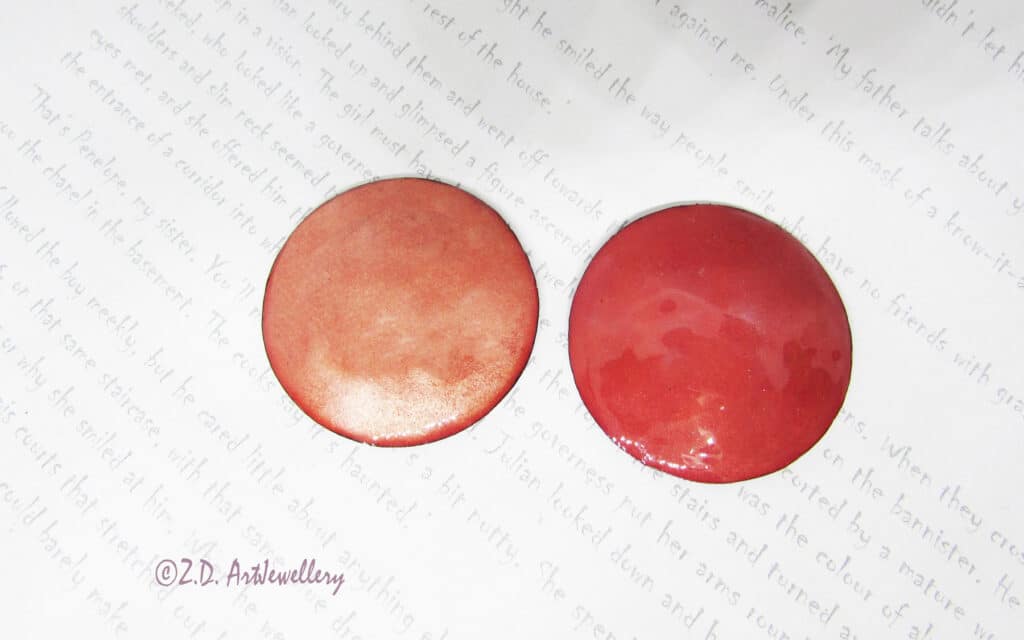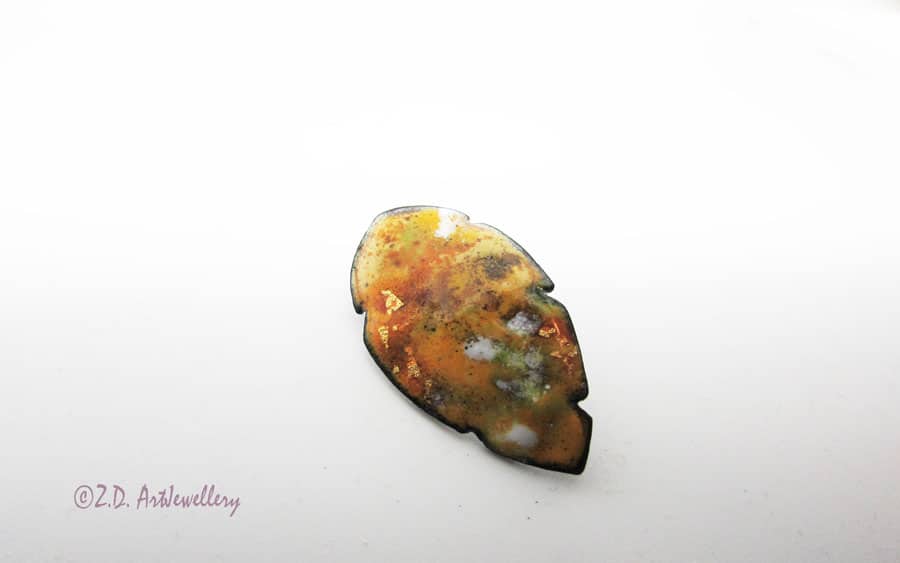

In this post, I want to write about firing enamel flux on copper blank. The term “flux” in enamelling is different than that in metalsmithing. In metalsmithing we use flux to flow the solder. In enamelling, flux is the term for the clear transparent layer that we usually fire as the first layer. And then we fire other colours and layers on top of the flux. In the cloisonné technique, after firing the flux, we fuse the stripes over that layer and then fill the formed cells with coloured enamels. That does not mean that we can not fire other colours directly on copper or silver. Many colours are OK to be fired directly on metals, but not all of them. Enamellists always test the colours on various metals that they work with, in order to see the look and test if they are reactive to that specific metal or not!
It is very important to use medium or hard-fusing enamel as the flux for base coat. Otherwise, we will face pull through and bubbles in the top layers. After counter enamelling the blank, we need to clean the surface completely. They are products preventing the formation of oxides on the surface of metal, like Scalex. However, I usually pickle my blank and give it a polish!
Then, it comes to adding the flux. I wash the flux using distilled water and then add it over the surface of blank. As the first layer I usually apply a little thicker coat. I tap the blank gently to prevent trapping air bubbles inside enamel layer. Then, I fire it using my kiln at around 790 degrees Celsius. You can also fire it using a torch. Depending on what flux and brand of enamel you are using the time and temperature you need to fire your piece can be different.
What is important in the case of copper is that flux will absorb copper oxide and if your time and temperature of firing is enough, it turns from a reddish colour to a clear creamy colour. Usually, firing the flux usually need more temperature or longer time than other colours to fully fuse.
According to Linda Darty in her book (The art of enamelling), the stages of firing are sugar-coat texture, orange-peel texture, fully fused surface and over-fired surface.
According to my experience, in sugar-coat stage, if you touch the surface of the metal you can feel the grains and the surface is not glossy. But usually, this is not the step that confuses the enamellists! This is an early stage. Sometimes, you can fire your enamel to sugar-coat step intentionally and as a designing element. In the orange-peel stage, you still feel a texture and the surface is not even. In fully-fused surface, we have an even and glossy surface.
Look at the picture below. The enamel fired on the left-hand side blank is fully fused and the one at right side is not. Compare the colour! Also, the surface of fully-fused enamel is smooth and even. So, to fuse the right-hand side blank I will refire it for a longer time to have a good blank for enamelling!

In addition, we might overfire an enamel. It means we keep firing it after fully fusing the enamel or at much higher temperature suitable for the enamel. When you overfire an enamel, you will see some dark spots, particularly in warm colours like red and orange that are very sensitive. Look at the image of intensely overfired piece below!

In copper, you might see some greenish spots appear. Again, you might use over-firing intentionally, like what I did in these pieces.